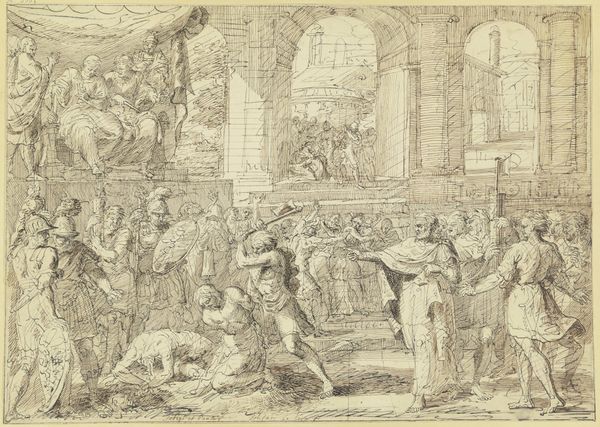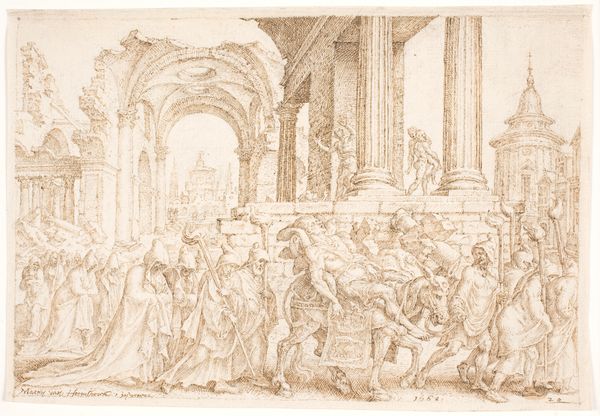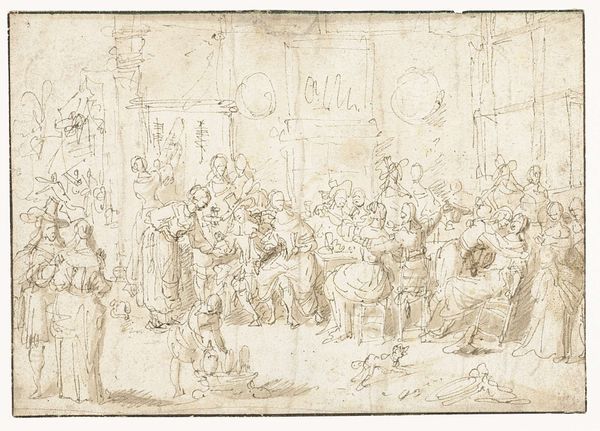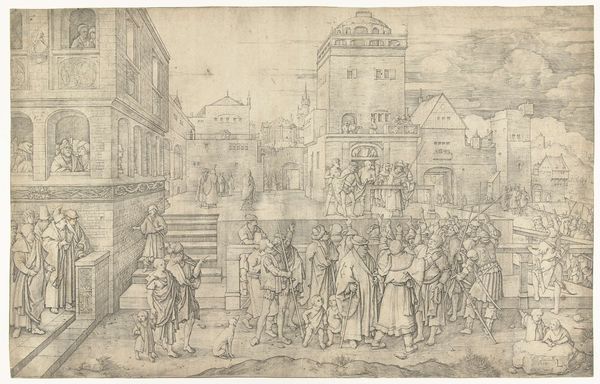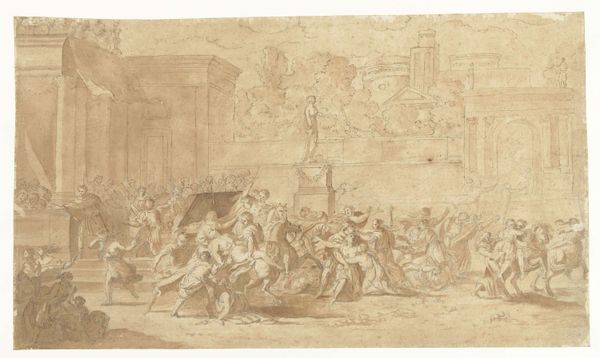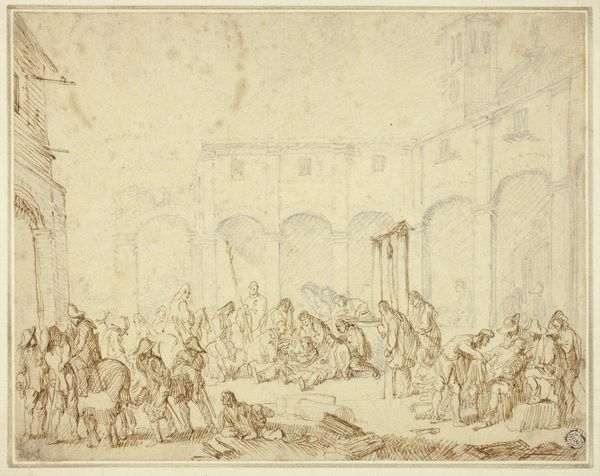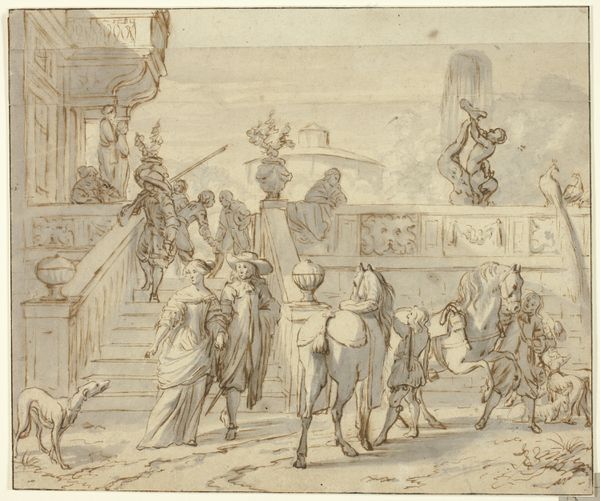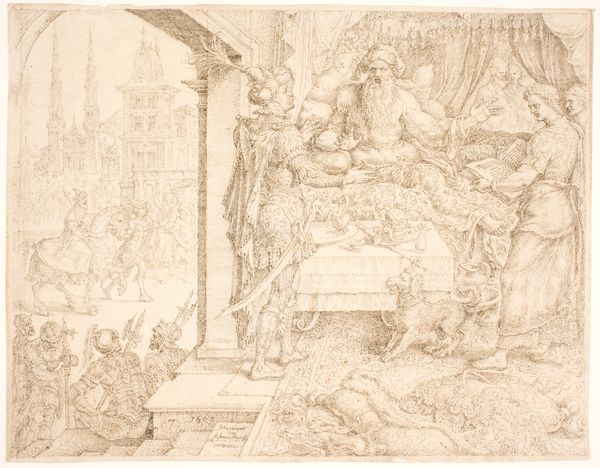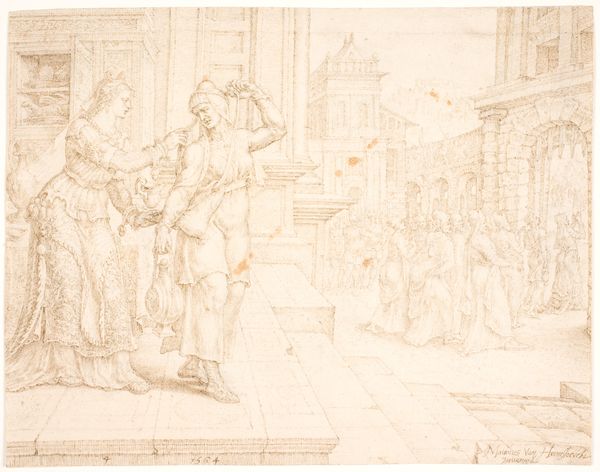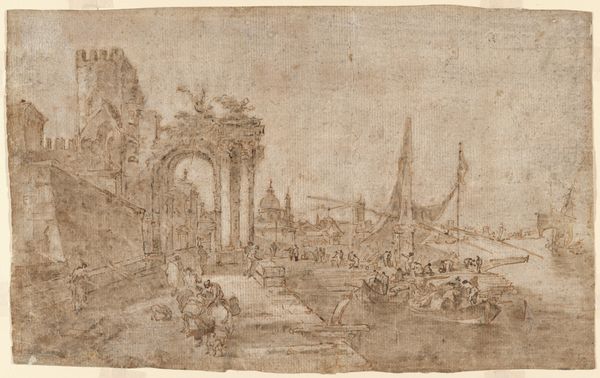
drawing, print, etching
#
drawing
#
ink drawing
# print
#
pen sketch
#
etching
#
etching
#
mannerism
#
history-painting
Dimensions: 144 mm (height) x 210 mm (width) (bladmaal)
Curator: At first glance, there’s something unsettlingly calm about the drawing; the chaos rendered in delicate lines almost makes it more… unnerving. Editor: That’s a good starting point, the piece is titled “Israel bliver delt mellem Omri og Tibni” - which translates to Israel divided between Omri and Tibni. Maarten van Heemskerck completed it in 1568, we believe. It's an etching, currently residing here at the SMK. The story it depicts is a historical power struggle, yes, but those fallen, ruined pillars surrounding the crowd… that feels deliberate. Curator: Oh, absolutely! Ruin becomes such a potent visual symbol for political and societal decay in early modern prints. Look how Van Heemskerck juxtaposes the relatively orderly lines of soldiers with the crumbled architecture. It’s not just background scenery; it’s commenting on the fragility of power. Editor: Right! And the crowds on either side, flanking Omri and Tibni – figures symbolic not only of loyalty but also, perhaps, of societal division itself. That stark contrast. You feel the weight of their divided loyalties. Those flags, they pierce through the architecture! And if you zero in on those soldiers in the foreground... they almost feel crammed into the scene. A feeling of barely-controlled tension? Curator: You're onto something. There's a visual compression going on. All that detail, meticulously etched…but toward what end? Is he glorifying power or dissecting the psychological mess of conflict? The helmets especially – the strange details of them are a kind of... well, psychological armour. Editor: It’s almost as if the meticulous detail becomes overwhelming. Looking again I see these pen sketches are trying to teach me how humans organize themselves with heraldry and battle strategies, and its almost ungraspable. What is left? The psychological elements emerge? Curator: Van Heemskerck definitely packed this scene with narrative layers, prompting questions about not just political history but psychological responses. Thanks for giving this your insight! Editor: A pleasure, it just looks like how our brains process a crisis doesn't it? I really did come to love that.
Comments
No comments
Be the first to comment and join the conversation on the ultimate creative platform.
